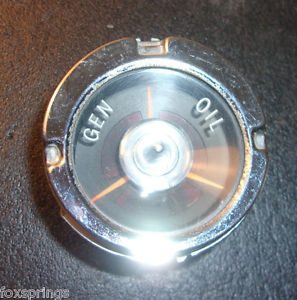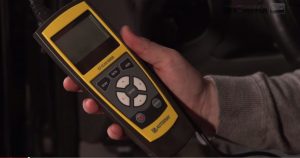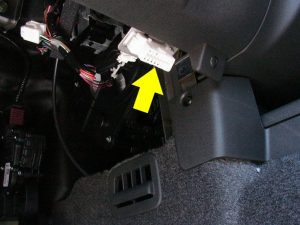Cars built since the mid-late 1990s have a kind of ride-along mechanic in the form of the OnBoard Diagnostics (OBD) computer which not only runs the show but lets you know when something’s not right via the “check engine” light that comes on in the dashboard.
More specifically, stays on.
The “check engine” light should come on – briefly – when you first start the engine. But it should go out once the engine is running. If it stays on while the engine is running, then something’s not right. Probably with the emissions control system but it can be other things, too.
This is a smart light, as opposed to the idiot lights pre-OBD cars came with – which lit up to let you know it was already too late. For example, the “oil” light would come on when you’d already lost almost all oil pressure; the “amp” of “gen” light would let you know the alternator (or generator) was no longer making electricity. Very soon – once the battery ran out of juice – you’d be in the market for a tow truck.
They didn’t give you much warning a problem was developing.
Gauges were an improvement – if you paid attention to them and if you understood what a normal vs. an abnormal reading was. This was the big problem with gauges. They didn’t light up. Ever. Which meant that if you weren’t scanning them regularly as you drove, you could lose oil pressure or drive around with the engine temperature in the red zone and be oblivious to these potentially catastrophic problems – until they became actually catastrophic.
Then, of course, you’d know.
The check engine light – which is really the Malfunction Indicator Light – lets you know more. And – usually – in plenty of time to deal with whatever’s wrong before it becomes a bigger problem.
If you have a scan tool.
Most people don’t.
Aye, there’s the rub.
Without the tool, all you’ve got is “check engine.” And that could mean anything from a loose gas cap (most new cars are designed to prevent gas vapors from escaping into the environment; if you didn’t completely tighten the gas cap, a fault is registered and the MIL lights up) to something more serious, such as a problem with an oxygen sensor or fuel injector which could – if left unfixed – ruin an expensive catalytic converter.
Or two of them.
Most new cars have at least that many; several have four of them. They are not cheap. 
If you have a scan tool, you can access the trouble codes – which in turn either tell you what the problem is or point you in the right direction. The cheapest/most basic scan tools – which cost about $60 and can be bought at any auto parts store – only give you the code but the better models – which aren’t obnoxiously expensive, around $120 – will also tell you what the codes mean.
With any scan tool, you can also re-set the MIL – turn off the “check engine” light by clearing the stored codes.
If you haven’t fixed whatever caused the light to come on, the light will come back on – and fyi, smog test stations are aware of this trick – so it won’t work as far as getting your car passed if there’s some still-there issue with the emissions control system. But it will work if you fix the problem – a loose gas cap, for instance – and without having to go to a shop for assistance. Given the high cost of shop rates, the cost of the scan tool is money well spent if it saves you from going to the shop even once for just about anything that involves them taking a look at your car for you.
Not to mention the time saved.
Also, knowledge is power. Even if you don’t work on cars, having some idea what the problem is before you take it in is always a good idea. Especially if you get a diagnosis that doesn’t jibe with what the code reader told you. It’s like having a paint depth reader when going to check out a used car. You don’t have to be a body/paint man to use the tool – and avoid buying a car that was wrecked and slathered with body filler.
Like the paint depth tool, anyone can use the scan tool. All OBD-equipped cars have the same universal OBD port, usually located in the driver’s side footwell area. It’s a pretty obvious electrical plug in (see pic below). It doesn’t matter what make/model car you have. All OBD scan tools fit all OBD-equipped cars.
Instructions will come with the tool, but – in general – you plug the tool in to the OBD port, then start the engine and read the codes on the tool’s LCD display. The instructions will also tell you how to clear the codes and re-set (turn off) the “check engine” light.
It’s a tool worth having, even if you’re not very handy!
. . .
Got a question about cars – or anything else? Click on the “ask Eric” link and send ’em in!
If you like what you’ve found here, please consider supporting EPautos.
We depend on you to keep the wheels turning!
Our donate button is here.
If you prefer not to use PayPal, our mailing address is:
EPautos
721 Hummingbird Lane SE
Copper Hill, VA 24079
PS: EPautos magnets – they’re back! are free to those who send in $20 or more to support the site. Also, the eBook – free! – is available. Click here. Just enter you email in the box on the top of the main page and we’ll email you a copy instantly!












Recently I had to retire my long time daily driver 1984 VW due to a frame crack. That car had one catalytic converter, one O2 sensor after the cat, and a basic computer that managed the mechanical fuel injection (CIS). It would trim fuel rich or lean via a duty-cycle valve in the fuel circuit. Long term Fuel Trim (as it’s called now) was set with an allen wrench. Drove that car for 20-odd years completely oblivious to the advent and evolution of OBD.
When I bought a 2001 Toyota Camry it quickly became apparent that if I wanted to keep on DIY-ing my ride, a scanner capable of viewing and recording live data would be as essential for this car as a multi-meter was for the VW. I also recommend the “Schrodinger’s Cat” videos. OBD terminology isn’t rocket science, it’s just a new language for old principles. It helps a great deal to learn to think like the computer … which is not actually all that smart. 🙂
Hi Leo,
Yup. I got a scan tool when I got my first OBD vehicle (’02 Nissan Frontier). It’s – as you say – an essential service too for these vehicles, without which you are just making life hard on yourself. I strongly recommend buying a tool that can decipher the codes, not just read them. The hassle you’ll save will be well worth the extra $40 or so you spend.
Intermittent faults can be cleared and then go for the test after driving the car for normal use for a day or two and checking to make sure its not pending.
Over the years, I’ve kept many a car on the road here in the Peoples Republic of New York with my scan tool. I had the ever persistent always on EVAP Code, with 2 Chevy vehicles, even though the EVAP monitor was telling me the EVAP system was OK. An OBD2 reset and drive cycle would usually net me the inspection sticker. Then I’d drive around with the code on for the rest of the year and then I’d repeat the process. NY put out a brochure telling you how many vehicle monitors can be incomplete and still pass emissions inspection. Most people would probably get rid if the car. I hate to think of how many perfectly good vehicles are scrapped because of glitches in the software.
Or scrapped because a few electrolytic capacitors failed. It’s becoming more common in the computers of older cars. The caps age with heat, gradually lose function and cause all kinds of intermittent weirdness. For under $20 you can buy kits containing the required capacitors, similar to the kits available to fix computer monitors and TVs. It’s a fairly simple soldering job – these capacitors are not tiny. I just resurrected a dead 23″ LG monitor, total cost $14.95 and 2 hours time. Saved me several hundred bucks for a replacement of equal quality. For automotive purposes you want to make sure the capacitors are of the best quality available. There are only a few trusted manufacturers.
Static codes are one thing, but live data is quite another. So, OBD II is better for this. If your car is running rough, study up on fuel trim. I recommend a series of videos from some guy who calls himself Shroedinger’s Cat. Very informative. But you need a live data scanner to graph the data.
I use Torque Pro with a bluetooth OBDII plug in reader that stays installed in my truck. You can build custom gauge packages for your vehicle on the phone app.
There are also really cheap OBD-II readers you can use via your cell phone, for something in the vicinity of $20. The app on the phone does all the code interpretation, and if you get a good app (like DashCommand), it’ll do a whole lot better than a cheapo all-in reader.
Even better, some cars will display the OBD II trouble codes on the dash with NO scan tool required!!! My 2001 Dodge truck will do this simply by turning the key from off to on three times in rapid succession and then leaving it on. The code can then be easily looked up on the Internet.
In fact, I did this just the other day when the CEL came on. I took it to the local auto parts store and their machine read “No code.” Huh! Well, why was the light on? Tried the key method and it displayed an ambient temperature sensor fault code that wasn’t even programmed into the store’s scanner because it was non-critical. I disconnected the battery to reset the CEL and now it’s gone. Mechanic bill = $0000.00!!!